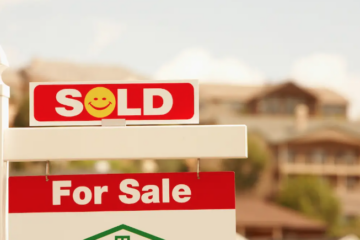For prospective buyers, visualization is key in determining if a house feels like home. RE/MAX agents weigh in on why staging could be a make-or-break factor in sellers receiving top dollar value.
Ever scrolled through a listing and been bemused by photos including outdated furniture, empty rooms or wild wall colors?
It’s the house and property that are for sale, but the existing décor – or lack thereof – inside the home can shape potential buyers’ perception and even affect its perceived value. According to the National Association of Realtors (NAR) 2021 Profile of Home Staging, 82% of homebuyers’ real estate agents said that staging helps buyers visualize themselves living in a prospective home.
“When a buyer walks in, they usually know within 15 seconds if they like a house or not,” says Lily Vallario, an agent with RE/MAX Realty Group in Maryland and a professional home stager. “That’s why staging is so important – it’s what keeps buyers inside the home wanting to see more.”
Put simply, staging is the act of rearranging a home’s objects and curating an aesthetic to appeal to the most buyers possible. Sellers can stage a home themselves, bounce ideas off of their real estate agent or hire a professional home stager for larger undertakings.
RE/MAX real estate agents – including Vallario – explain why effective staging could be critical to attain top-dollar value for a home and influence a streamlined sale.
Staging creates space
Staging a home is often easiest when it’s already vacant, but that situation is rare. Most sellers are juggling their typical busy schedules while their house is on the market.
“Oftentimes, just clearing out clutter makes a huge difference on the spaciousness of a home. The owners don’t realize it’s cluttered because they live there and see the space every day,” says Jackie Soltis, an agent with RE/MAX Executive in North Carolina who offers staging services to clients.
“Before evaluating the style of the home, buyers will notice if it feels messy or dirty,” she adds.
She suggests removing – by storing or getting rid of – personalized mementos and excess decorations, aiming for surfaces to have minimal coverage.
“I urge [seller clients] to take all of their personal photos down. I’ve had [buyer clients] come into a home and feel like they’re disturbing the people who live there because they just see their family everywhere. It’s hard for them to picture living in someone else’s house,” Soltis says.
Smaller spaces can use some extra TLC in creating the appearance of roominess. Especially now, consumers are seeking out multipurpose spaces that can function as a home office. Vallario’s goal is to get seller clients thinking outside the box with ways to add function without the addition of square footage.
“It’s all about how you can carve space out of an existing room,” she says. “Since home offices are in such high demand, I’ve been creating office spaces in the corners of bedrooms or even in the living room, utilizing idle wall space.”
One of her favorite methods for helping small rooms feel larger is adding mirrors to walls, letting the reflection echo.
And contrary to its clean appearance, a vacant home is not conducive for buyers to gauge the size of rooms or envision them filled with their own furniture.
“When a bedroom is empty, for example, people often doubt if they can fit a king size bed. But if they saw a tidy, staged bedroom, they would understand how well a space fits furniture. Staging a vacant house not only makes it look livable and inviting, it also makes the rooms look larger,” Soltis says.
Staging enhances online optics
Today, many prospective buyers are starting their real estate journeys online, meaning that first impressions are formed from a quick scroll through a photo gallery. According to the Future of Real Estate Report by RE/MAX, 94% of North Americans who are searching for properties use an online platform to do so. The NAR Profile of Home Staging also showed that 41% of buyers are more willing to walk through a staged home they first saw online.
“A staged house makes for beautiful photos, and those beautiful photos attract more buyers online – ultimately increasing the traffic of showings,” Vallario says.
The quality of photography matters, of course – with the best photos being high-resolution and large in size – but the content displayed within the photos and color schemes matters as well.
In a listing’s gallery, the order of photos often follows the natural flow of the house, meaning spaces closer to the front door are seen sooner than the upstairs or basement levels. Because of this, Soltis believes more attention should be placed on staging main spaces like the entryway, living room and kitchen, and bedrooms can be kept simple.
She warns to not neglect the front of the home either, as it is often the thumbnail when a listing is presented online and is used in nearly all marketing materials. Exterior staging to boost curb appeal, however, doesn’t need to be extensive. Soltis suggests a deep cleaning – like a power wash – and adding a few welcoming touches like a doormat, matching planters and patio chairs if the home has a front porch.
Staging helps a home appear updated
Temporary in nature, staging helps modernize dated spaces, and also provides an opportunity to incorporate trendy and current home decor pieces.
“Trends change so often, but it’s fairly easy to keep up with them when staging,” Vallario says. “In the 1990s and early 2000s, people were painting walls red, orange and yellow because that’s what was in style. For the past three years, wall colors have leaned cooler and revolved around grey. And 10 years ago, wood – like maple – was all the rage in kitchens, but now people are veering lighter and choosing white cabinets and tiles.”
In essence, paint color can change the feel – and transform the time period – of an entire home. When in doubt, experts advise opting for neutral wall colors like beiges, greys and whites, to create a blank canvas effect. For a streamlined appearance, one neutral color can run through all the rooms.
Investing in a few home décor swaps upfront can increase the home’s worth in the long run, and even potentially help the seller receive higher offers. Currently, popular improvements among sellers are upgraded light fixtures, new cabinet knobs, accessories with popular textures like rattan, and swapping wall-to-wall carpet for hardwood flooring or wood-like options.
Staging speaks to emotion
A house is a space of creative expression, customization and comfort. But when it’s on the market with tours coming through, it’s time to put the personalization aside and focus on what creates the most desirable template for prospective buyers.
“When selling a house, we’re really selling a product and a lifestyle. So, you have to think about it like it’s not your home anymore – it’s a product for sale. Because of that, we’re going to have to rearrange the furniture for what consumers would like best, and repaint to a neutral color in order to appeal to buyers looking online,” she says.
In addition to improving the overall appearance, staging is intended to enhance the emotional component of a property. An inviting living room could be a promising place to gather with loved ones, a freshly mowed backyard could be room for children or pets to play, and a set dining table could be the perfect place for holiday entertaining.


